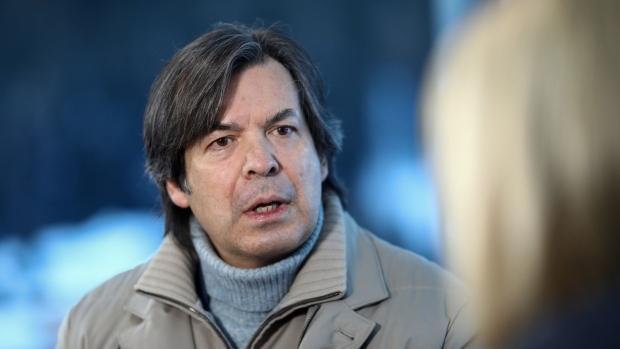Jan 20, 2023
Intesa Shedding Up to €20 Billion of Assets as ECB Faults Risk
, Bloomberg News

(Bloomberg) -- Intesa Sanpaolo SpA is cutting risk-weighted assets by as much as €20 billion ($22 billion) after the European Central Bank faulted the lender’s calculations of how much risk it faces.
The Italian bank, which comfortably exceeds its capital requirements, is carrying out the reduction via the sale of loans and other assets, according to people familiar with the matter. It’s also looking at so-called synthetic securitization, which generally involves investors assuming the risk of losses for a fee, the people said, asking not to be identified as the matter is private.
The euro area’s top banking watchdog found in a review last year that Intesa needed to take a more conservative approach in its risk models, the people said. Such a move would likely increase the bank’s risk-weighted assets, or RWAs, and the planned reductions could counteract any rise.
Intesa, which earlier declined to comment, said in a statement late Friday that actions to reduce RWAs carried out in the fourth quarter are related to the regulatory changes applicable as of Jan. 1 by European Banking Authority guidelines, and “contribute to the significant value creation and distribution to shareholders.” The bank didn’t disclose the amount of reductions.
A spokesmen for the European Central Bank declined to comment. The size of the reduction in risk assets isn’t set and could end up being lower, the people said.
The divestments come as Intesa Chief Executive Officer Carlo Messina is seeking to deliver on one of the most generous shareholder-payout plans among European banks. The ECB has said it wants lenders to take a prudent approach to distributing capital given uncertainty over the economy, and some European officials have said privately they expect only the best-capitalized firms to be able to conduct major buybacks if the economy suffers this year.
Intesa declined as much as 3.2% after the Bloomberg report, and was down 1.9% at €2.18 at the close of trading, giving the bank a market value of €41.4 billion.
Intesa pledged last year to distribute more than €22 billion via dividends and share buybacks for the period through 2025. It’s expected to decide on a €1.7 billion share buyback, for which it already has approval from the ECB, by the time its full-year results are published early next month. The divestments and attention to its capital strength may make it easier to get regulators’ backing for such distributions in the future.
The company’s move is likely to fuel an ongoing debate over how conservative banks should be heading into a potentially tough economic climate. Regulators are aiming to ensure major lenders are secure enough not to add to any turmoil, while bankers would like the freedom to deploy capital into expanding their business or attracting shareholders with payouts.
Intesa exceeds its minimum capital requirements by a wide margin and the slated reduction is only a fraction of the €324.4 billion of risk-weighted assets it had at the end of September.
The bank said in the statement it had high-quality capital equivalent to about 13% of its risk-weighted assets at the end of December, well above its minimum requirement of about 8.9%. It will be “at levels well above the target of over 12% over the 2022-2025 business plan time horizon,” Intesa added.
Banks measure the size of their balance sheets both in absolute terms as well as by taking account of the relative risk that assets pose. The latter approach — by risk-weighted assets — is the most relevant for assessing their financial strength in Europe.
Lenders use those internal calculations to help determine how much capital they need to hold on to in order to cover potential losses and how much they have left for dividends and share buybacks. Other important considerations include their ability to generate profits as well as the economic outlook, which deteriorated last year as central banks raised interest rates and Russia invaded Ukraine.
The ECB has said it wants banks to take account of potentially adverse economic conditions when planning for how their capital ratios could evolve, but has stopped well short of a repeat of the de facto ban it enacted on payouts early on in the pandemic.
The regulator has continuously scrutinized the models banks devise to gauge their risk since it started supervising the industry in 2014. Investors and regulators alike have expressed reservations about the accuracy of these calculations, given the incentive for banks to free up capital by making optimistic assumptions.
(Updates with Intesa’s comments in fourth, 11th paragraphs.)
©2023 Bloomberg L.P.





